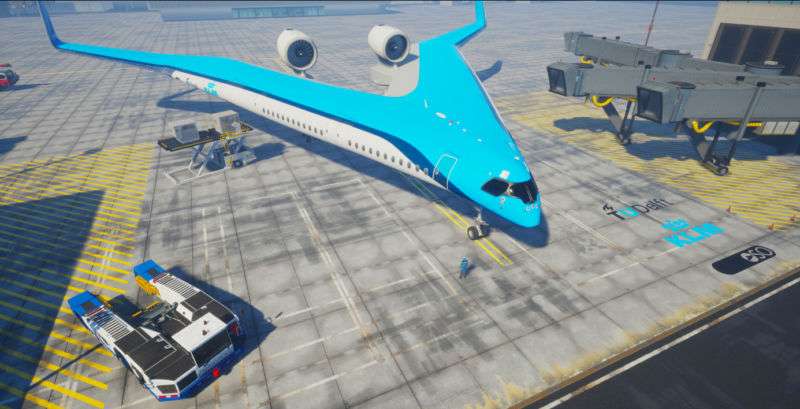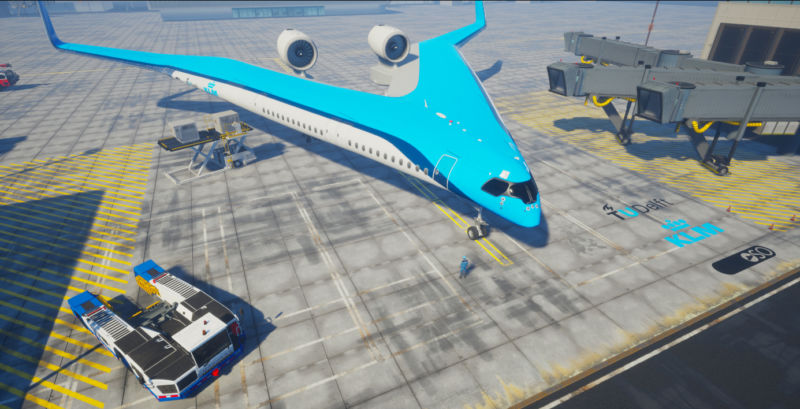
“Flying-V” airplane design promises fuel savings, but there’s a catch

Enlarge / A rendering of the Flying-V wearing KLM’s livery. (credit: Edwin Wallet, Studio OSO)
On Monday, news started to spread about a radical new design of passenger plane. Shaped like the letter V, (and called the Flying-V), it does away with a conventional fuselage and even the middle bit of a blended wing body design—this plane is all wing. As a result, sections of the wings are much thicker than on a normal passenger jet, with a pair of engine nacelles mounted above the rear trailing edges. Passengers sit along the leading edges, with fuel and cargo also stored in the wings. The advantage of this unusual shape? It could carry as many passengers as an Airbus A350—314 of them in a standard configuration—but use 20 percent less fuel for the same journey.
The design is courtesy of TU Delft, a Dutch university, which has been partnering with Dutch airline KLM on the project to make air travel more sustainable. “Radically new and highly energy-efficient aircraft designs such as the Flying-V are important in this respect, as are new forms of propulsion. Our ultimate aim is one of emission-free flight. Our cooperation with KLM offers a tremendous opportunity to bring about real change,” said Henri Werij, dean of the faculty of aerospace engineering at TU Delft.
A flying model is meant to take to the air during KLM’s 100th anniversary celebration in October, along with a full-size mockup of part of the interior. The interior will also be a little out of the ordinary, according to Peter Vink, a professor of applied ergonomics and design at TU Delft. “The new shape of the aircraft means we have exciting opportunities to design the interior, making flying more comfortable for passengers. For instance, as part of the Flying-V research, we’re looking into new options to having a rest or taking meals on a plane,” he said.
Read 2 remaining paragraphs | Comments




